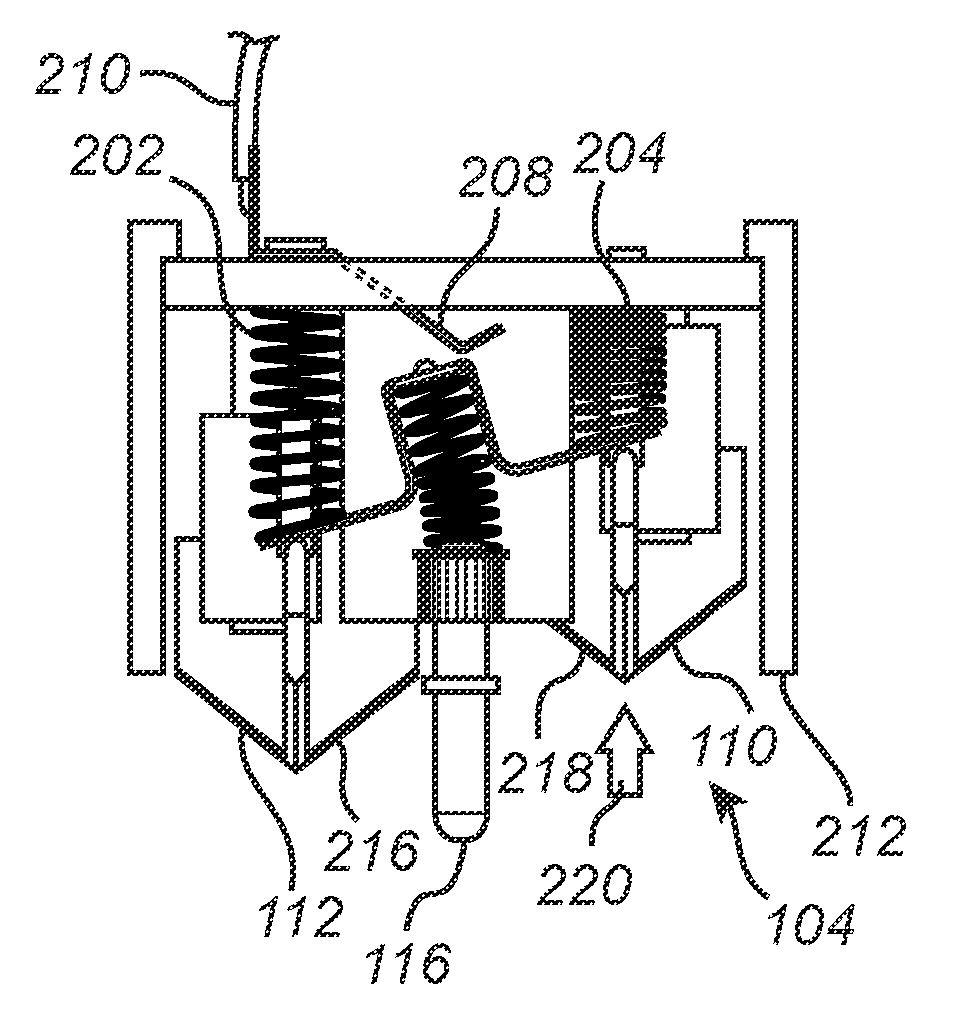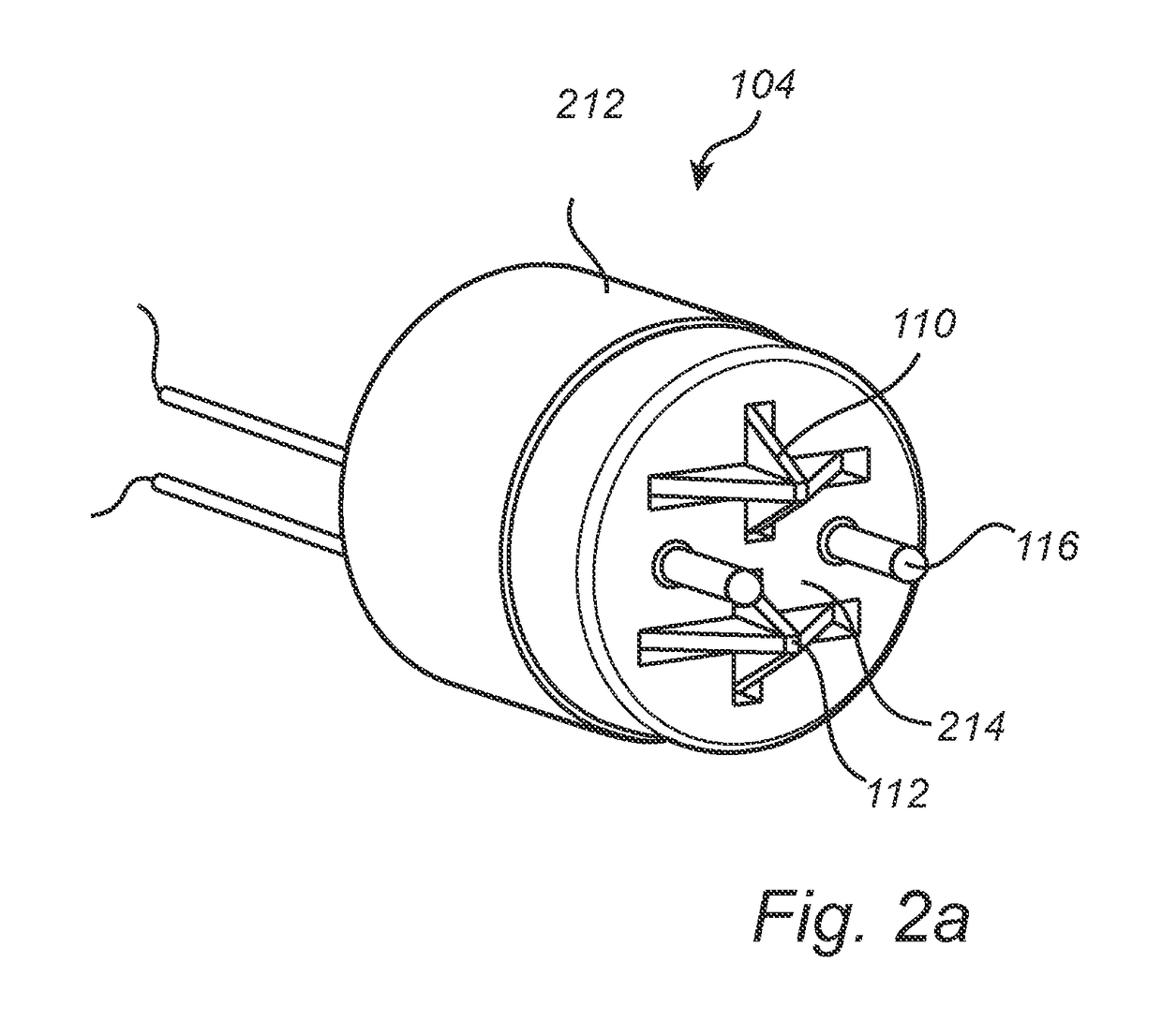End cap for a tubular light source
a tubular light source and end cap technology, applied in the direction of lighting and heating apparatus, lighting support devices, coupling device connections, etc., can solve the problems of exposing the installer to potential hazards, touching the exposed end cap and receiving an electrical shock, etc., to reduce the risk for the installer.
- Summary
- Abstract
- Description
- Claims
- Application Information
AI Technical Summary
Benefits of technology
Problems solved by technology
Method used
Image
Examples
Embodiment Construction
[0038]The present invention will now be described more fully hereinafter with reference to the accompanying drawings, in which currently preferred embodiments of the invention are shown. This invention may, however, be embodied in many different forms and should not be construed as limited to the embodiments set forth herein; rather, these embodiments are provided for thoroughness and completeness, and fully convey the scope of the invention to the skilled person.
[0039]FIG. 1a schematically illustrates a luminaire 100 wherein a tubular light source 102 comprising two end caps 104a, 104b of the same sort according to an embodiment of the present invention is being mounted into a mains connected fixture 106. As illustrated in FIG. 1a, one end cap 104a is first inserted into a socket 108 arranged in the fixture 106, thereby depressing and actuating a first and a second spring loaded switching element 110, 112 arranged on the outside of the end cap 104a. In this state, when one end cap ...
PUM
 Login to View More
Login to View More Abstract
Description
Claims
Application Information
 Login to View More
Login to View More - R&D
- Intellectual Property
- Life Sciences
- Materials
- Tech Scout
- Unparalleled Data Quality
- Higher Quality Content
- 60% Fewer Hallucinations
Browse by: Latest US Patents, China's latest patents, Technical Efficacy Thesaurus, Application Domain, Technology Topic, Popular Technical Reports.
© 2025 PatSnap. All rights reserved.Legal|Privacy policy|Modern Slavery Act Transparency Statement|Sitemap|About US| Contact US: help@patsnap.com



